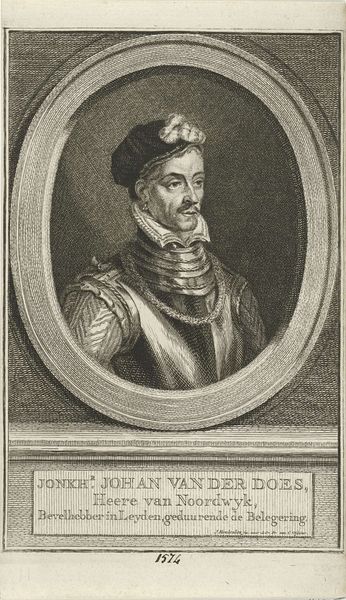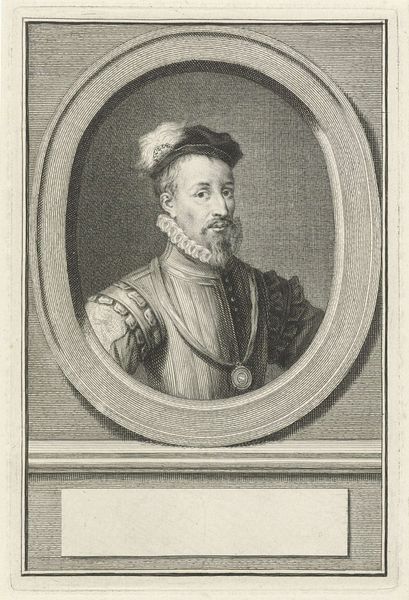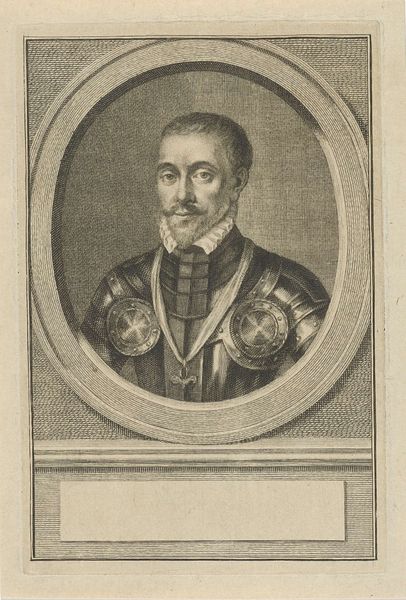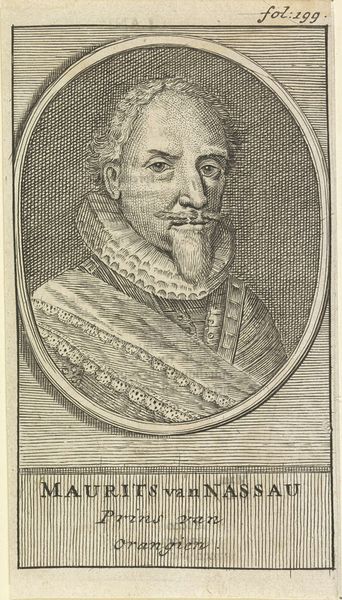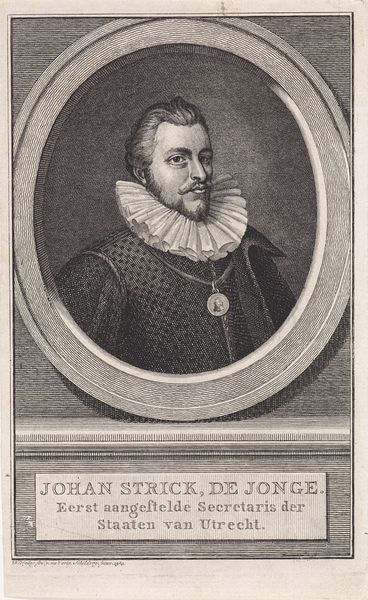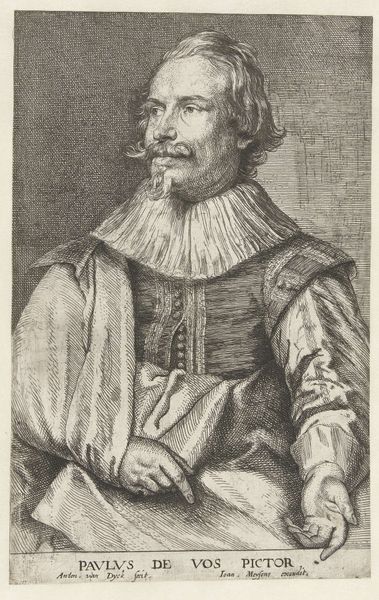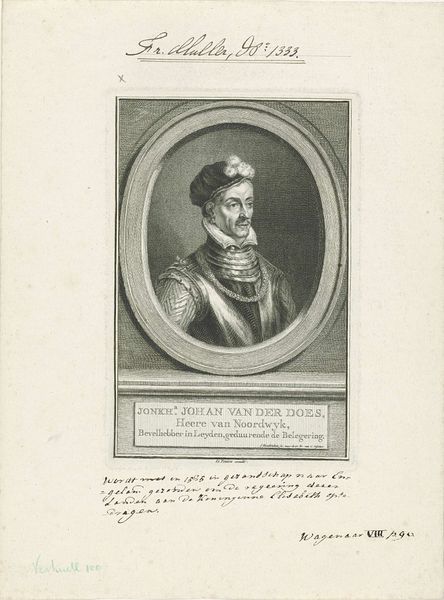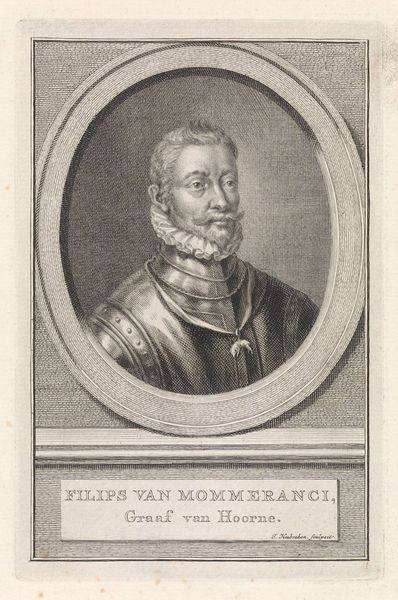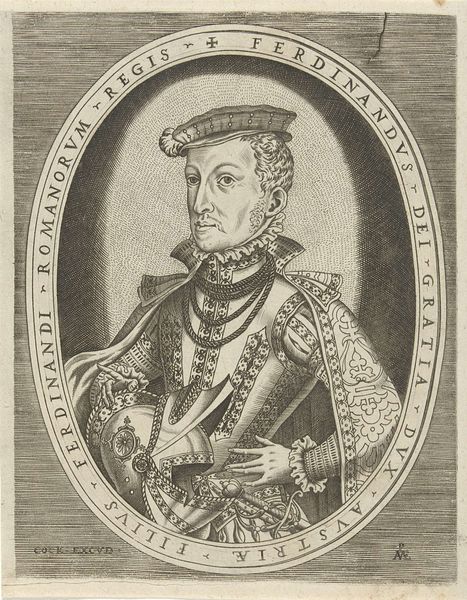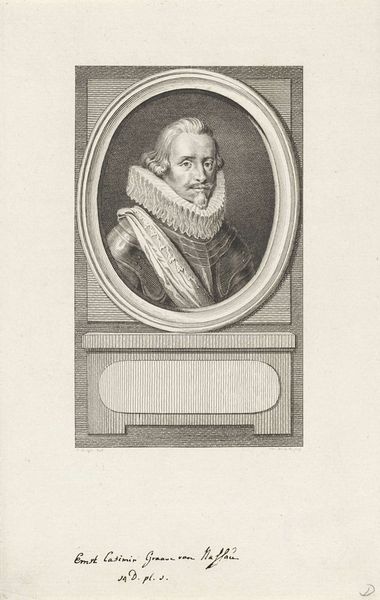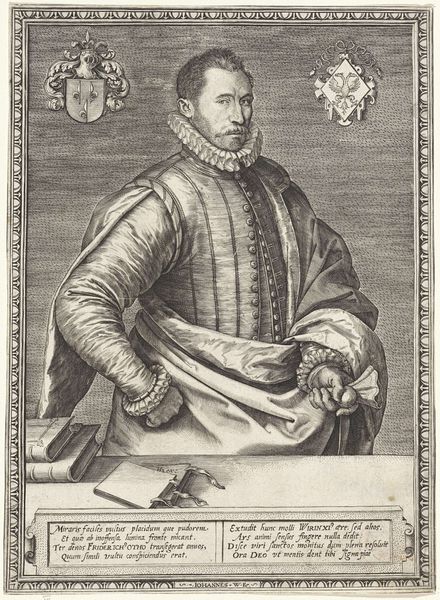
Dimensions: height 177 mm, width 115 mm
Copyright: Rijks Museum: Open Domain
Editor: Here we have Jacob Houbraken’s "Portret van Johan van der Does," an engraving from around 1772 to 1774. The incredible detail achieved through this medium is really striking, especially in rendering the textures of the metal armor. I am immediately drawn to the visual contrast within the portrait. What stylistic elements are particularly noticeable here? Curator: Observe the compositional structure inherent within this portrait; the subject is encased in an oval frame that is perfectly centered. The interplay of light and shadow delineates the planes of his face and armor, enhancing their three-dimensionality. Notice the precise hatching and cross-hatching that generate tonal variations. Can you discern how these technical aspects guide your perception? Editor: It seems the stark contrasts direct the viewer's eye immediately to van der Does's face and the reflective quality of his armor. It emphasizes his features. I see the lines add texture but do the varying weights carry significance in terms of symbolic meaning or status? Curator: The varying line weights and densities structure our understanding, the dark areas provide solidity and structure. We cannot overlook the relationship between the subject and his frame—how does that containment influence your reading of the portrait? Editor: Well, the frame gives the image structure, which may symbolize formality and power but also a level of restriction as the sitter is constrained inside it, giving off a sense of limited power perhaps? Curator: Intriguing thought. This close reading helps in understanding the image’s complex composition. Editor: I will look more closely at the construction of lines now in prints and portraits.
Comments
No comments
Be the first to comment and join the conversation on the ultimate creative platform.
